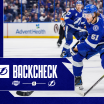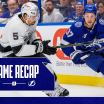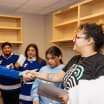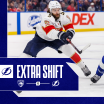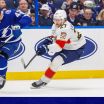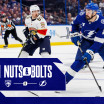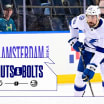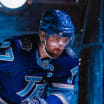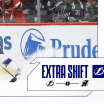For the first time since 2019, the Tampa Bay Lightning are entering the NHL Draft with a first-round pick. The Bolts currently hold the 31st overall pick in Thursday's first round, as well as six other selections with picks in the fourth round (103rd overall, from Chicago), fifth round (160th overall), sixth round (169th overall, from Detroit and 192nd overall) and seventh round (223rd overall, from New York and 224th overall).
Bolts will do most of their work in the later rounds of the 2022 Draft
Tampa Bay currently holds six picks in the final four rounds of this week's NHL Draft in Montreal
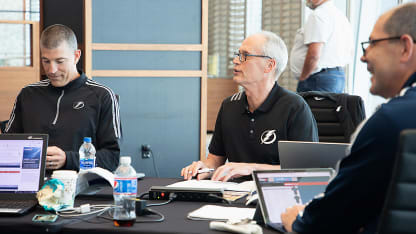
© Getty Images
By
Chris Krenn
TampaBayLightning.com
In 2019, Tampa Bay used their first-round pick (27th overall) to select Nolan Foote, who was later traded to New Jersey, along with Vancouver's conditional first-round selection in 2020, in exchange for Blake Coleman.
With the majority of the Lightning's picks coming in the latter half of the draft, it will be up to Al Murray and his staff to find a few diamonds in the rough to join the organization.
Murray, an assistant general manager and the director of amateur scouting for Tampa Bay, has been with the Bolts since 2010 and there have been plenty of late-round hits along the way. Ondrej Palat was a seventh-round selection in 2011. Ross Colton was a fourth-round pick in 2016. Cedric Paquette was taken in the fourth round in 2012.
"We're ready to go," Murray said. "We view it as a real challenge to try to find players in those later rounds that'll develop into NHL prospects and players."
There are certain qualities that Murray and his staff are looking for in young prospects. Those qualities will remain private between Murray and his crew, but it's up to them to get out and identify players that possess some of those traits. From there, the players get picked and the development rolls on.
"We think we do a pretty good job at finding players with the raw materials that our people want," said Murray. "Then, they get turned over to our player development people, who we think do an outstanding job at helping those guys maximize their potential."
In today's day and age, a lot of a draft pick's development is happening in the American Hockey League. Once a league that had a heavy veteran presence, the AHL has transformed into more of a development league with a number of young, talented prospects.
"The guys that have been really good players for us, if you look - a lot of them have spent a number of years in the American Hockey League after finishing their junior or college," Murray said. "It takes time to develop people."
You look at a player like Palat, who spent two full seasons in the AHL before joining the Lightning on a full-time basis. Now, he ranks seventh all-time in Tampa Bay franchise history with 628 regular-season games played and 423 points. His plus-147 rating is tied with Victor Hedman for the best in franchise history and his playoff contributions have been a huge part of the Lightning's postseason success over the past decade-plus. His 48 playoff goals trail only Nikita Kucherov's 52. His 94 points rank third all-time. Of course, arguably the biggest stat of all, Palat has buried a franchise-best 12 game-winning goals in the playoffs for Tampa Bay.
Then there's Colton, who also played two seasons in the AHL before earning his permanent spot on the Bolts roster. He went on to score the game-winning goal for Tampa Bay in a Stanley Cup-clinching Game 5 against the Montreal Canadiens in 2021. In 2021-22, he was a 20-plus goal scorer with 22 tallies in the regular season before going on to light the lamp five more times in the postseason, including a last second, game-winning goal against the Florida Panthers.
Some players need a little more time in the AHL to develop and oftentimes they're late-round picks. With six of the Lightning's seven selections coming in the fourth round or later, Tampa Bay will hope to find some of those late-round gems on Friday night when Rounds 2-7 take place.
"There's an old saying, 'It takes a long time to become an overnight sensation,'" Murray explained. "We believe that.
"We're looking for people that want to work and become the best player they can possibly be. Then, because we have a strong team, sometimes it takes a little longer to crack a spot into our lineup.
"We need people that want to continue to work at what they need to improve on and I think a lot of the players on our team have gone through that and have come out the other end really solid, NHL players for a long time.
"It's not getting there first, but it's getting there when you're ready, and then staying a long time and having a good career."
Ahead of the draft, Murray and the Lightning staff evaluate and place players into groupings. This year, there's a lot of great players available in the first round. The first overall pick still seems to be up in the air, along with a consensus order of what the top-five or 10 selections will look like. For Tampa Bay, they'll use their groupings to determine what kind of value is on the board if and when they go on the clock on Thursday night with the 31st pick.
"We think that there's groupings," Murray explained. "There's probably a group of 12 to 15 names that are at the top and then there's another group of about 20 names that are behind those guys and behind that's probably another 20 to 40 names.
"Depending on when our pick comes up, what players are left in those different groupings will help us determine whether we think it's in our best interest to stay and pick a player, because he's higher up on our list than maybe he is on some other lists, or whether the players that we view as value at a certain point have all been taken."
This year also features the added risk of drafting Russian-born players. Are Russian players going to be comfortable coming to North America and/or will they be permitted to come? The Lightning have done their homework here and feel comfortable with their draft list, which does not exclude Russians.
"We believe we've done our homework," Murray said. "If we take somebody from one of them, from Russia or from another country like Belarus, we think we're getting a really good prospect as a player and a really good person.
"We think we've done our homework on not only the people, but their situations and whether they're willing to come out or not. We think we've got all our ducks in a row. If we take somebody, we think we know what we're getting into."
With COVID-19 protocols and restrictions over the past couple years, it's often been difficult for scouts to get out and see prospects live and in person. In April of 2021, the Ontario Hockey League canceled a return-to-play plan for the 2020-21 campaign and some players were unable to play a season and spent the year training in their hometowns.
The 2021-22 season was, for the most part, back to normal. With that, all major junior leagues held a season and scouts gained an advantage over the prior year.
"All the teams [last year] were in a situation where none of us had as much information as we'd like to have or could have," Murray said. "This year, I think we're fully prepared again, and we have more information, so hopefully we can make better decisions.
"I think if there's a theme in this draft, there's a lot of a lot of players that came into their various leagues a year and a half or two years ago. Some were expected to be really outstanding players and there's been a lot of players that have been good, but not great.
"I think it'll be interesting to see, down the road, if there's some kids that get taken later in this draft that pop and come back to be top prospects a year from now after they get more training back under their belt after having missed all or part of a season of development, because it's tough to lose that season of development."
For Murray, the idea of the draft is simple. Find and scout quality prospects. Pick them if they're available. If you can't, you're probably in trouble.
"If we get a left wing, a center, a right wing, a left D and a right D, and none of them are any good, we're stuck with players or prospects that aren't going to be able to play for us and nobody else is going to want to trade for them," Murray explained. "If you get the best players and they're good NHL prospects, they'll have value either within our organization or to move for the hole that we might have to fill."
A large part of the Lightning core has been acquired through the draft. Stamkos, Hedman, Kucherov, Point, Vasilevskiy, and more were all Tampa Bay draft picks. Heading into Thursday and Friday, the Bolts are hopeful they can find some players to add to that core.
The picks come from all over. Stamkos was an OHL player. Point played in the WHL. Kucherov was drafted out of the QMJHL. Hedman and Vasilevskiy both came from outside of North America.
Over the past five drafts, Tampa Bay has selected nine players from the USHL, six from the WHL, five from Russian juniors, four from the QMJHL, three high school hockey players, two from the OHL, two from the KHL, two from Swedish juniors, one from the BCHL, one from the ECAC, and one from Finnish juniors.
The picks can come from anywhere. Every year, the Lightning's bases are covered. This year, the expectations remain the same.
"We're ready to go," said Murray. "As long as we have volume, we feel pretty happy that we get a chance to contribute."


